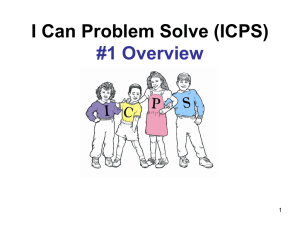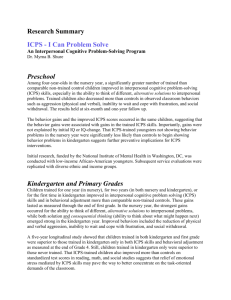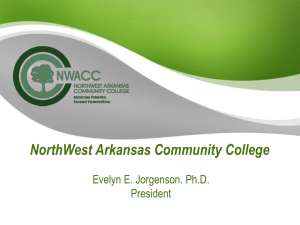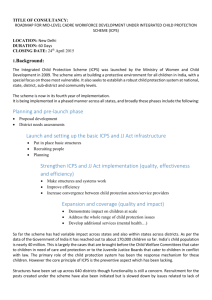The International Classification for Patient Safety: an overview Terminology
advertisement
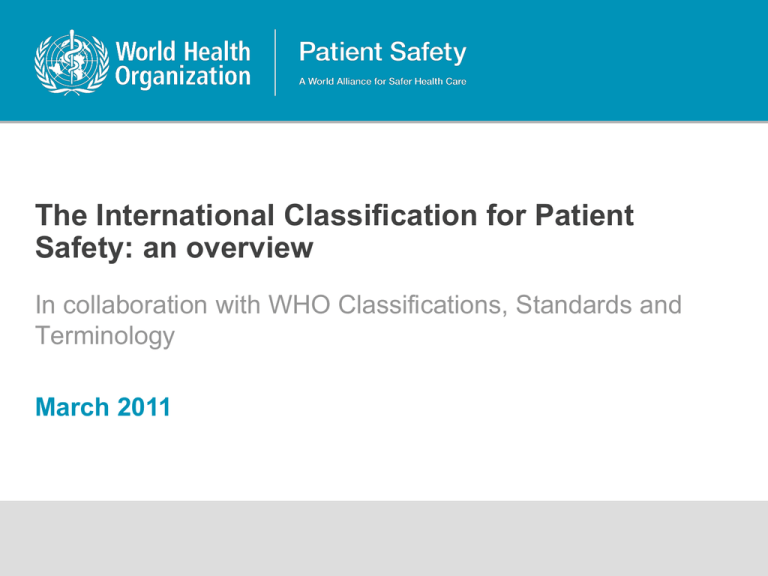
The International Classification for Patient Safety: an overview In collaboration with WHO Classifications, Standards and Terminology March 2011 Every year, an inadmissible number of patients suffer injuries or die because of health care. Most of these injuries are preventable A systemic problem that harms patients DEFENCES Procedures Physical barriers Training THE GAPS Culture Disease manage protocols missing or not actioned Patient harmed Poor compliance, poor supplies Inadequate knowledge, lack of training opportunities No clear leadership, no cohesive team structure “Humans fail because the systems, tasks and processes in which they work and operate are wrongly designed" Dr Lucian Leape, testifying to the US President’s Commission on Consumer Protection and Quality in Health The International Classification for Patient Safety (ICPS) aspires to become the shared global language necessary to facilitate the learning from unsafe acts as well as to develop solutions for improving patient safety. The ICPS is intended to define, harmonize and group patient safety concepts into an internationally agreed classification in a way that is conducive to learning and improving patient safety across time and borders. An International Initiative WHO started work on patient safety in 2004, aiming to develop a taxonomy, leading to the International Classification for Patient Safety (ICPS) The purpose is to enable categorization of patient safety information using ■ standardized sets of concepts with agreed definitions, ■ A domain ontology The World Alliance For Patient Safety Drafting Group; H Sherman, G Castro, M Fletcher, M Hatlie, P Hibbert, R Jakob, R Koss, P Lewalle, J Loeb, T Perneger, W Runciman, R Thomson, T van der Schaarf, M Virtanen. Towards an International Classification for, Patient Safety: the conceptual framework. International Journal for Quality in Health Care 2009; Volume 21, Number 1: pp. 2–8 ICPS Conceptual framework Influences Informs Contributing Factors/Hazards Influences Incident Type Incident Characteristics Informs Detection Influences Informs Mitigating Factors Informs Informs Organizational Outcomes Patient Outcomes Influences Informs Ameliorating Actions Actions Taken to Reduce Risk Actions Taken to Reduce Risk Patient Characteristics Incident Types http://www.who.int/patientsafety/taxonomy/icps_full_report.pdf http://www.who.int/patientsafety/taxonomy/icps_full_report.pdf NON HIERARCHICAL TREES NON HIERARCHICAL TREES ICPSMedinfoCapetown130910 NON FORMAL DEFINITIONS NON FORMAL DEFINITIONS NON FORMAL DEFINITIONS A Patient Safety Classification ICPS Print version(s) "fit for use" in multiple settings and languages. ICPS Computer version usable in electronic health record systems ICPS Web Platform that allows to access and browse the classification with descriptive characteristics maintain and update classification using a Collaborative Authoring Tool with established workflows ICPS with operational linkages to other WHO-FIC classifications and standard terminologies like SNOMED-CT Principles of ICPS development ■ The ICPS will be a member of WHO Family of International Classifications a ■ It will meaningfully link with other WHO Classifications and Terminologies. ■ The development will be harmonized and synchronized with the development of other WHO Classifications such as the ICD-11, ICF and ICHI ■ Modern methods in terminology and classification sciences will be utilized ■ The ICPS will be extensively field tested for relevance, applicability, quality and utility in practice in different countries ■ Main goal of the ICPS is to respond to the user needs for reporting, analyzing, monitoring, investigating patient safety incidents, facilitating safer patient management, improving patient safety practices in organizations, and building up patient safety indicators into existing health information systems to produce appropriate statistics and reporting systems. From Conceptual Framework to Content Model ■ Development and population of ICPS Content Model. To organize patient safety knowledge in a consistent & structured way and enable ICPS for use with computerized terminologies and ontologies a ICPS Content Model (CM) is needed. The CM captures the key parameters for the definition of an ICPS category in a standard & systematic way: ■ What is a concept – category in PS? (e.g. Incident Type: Nutrition); ■ How do you define it: basic properties? (e.g. entity, process and problem involved in Incident Type: Nutrition); ■ What different values it can take? e.g. entity -> general or specific diet; process -> delivery, storage; problem -> wrong patient or wrong storage. Tentative Timeline 2011: Alpha version ■ +1 YR : Commentaries and consultations 2012 : Beta version & Field Trials Version ■ +2 YR : Field trials 2014 : Final version for public viewing ■ 2015 : WHA Approval 2016+ implementation In 2010-2011 ■ Creation of Web based Collaborative Authoring Tool (iCAT-PS). The tool (see Fig 4) will allow ICPS developers to enter, edit, structure and discuss content of each ICPS category & value sets. ■ Pre-population of iCAT-PS ■ Peer review process It is imperative to build safer systems Because behind every unsafe act, there are patients, families, health care professionals
